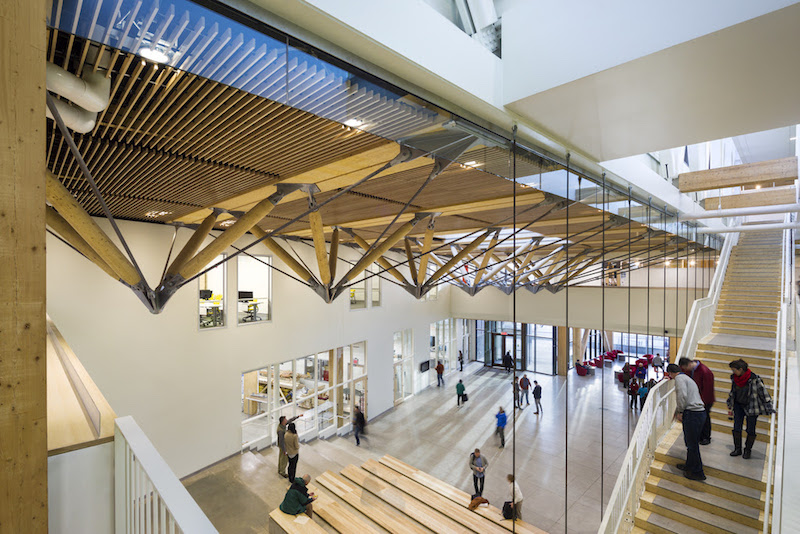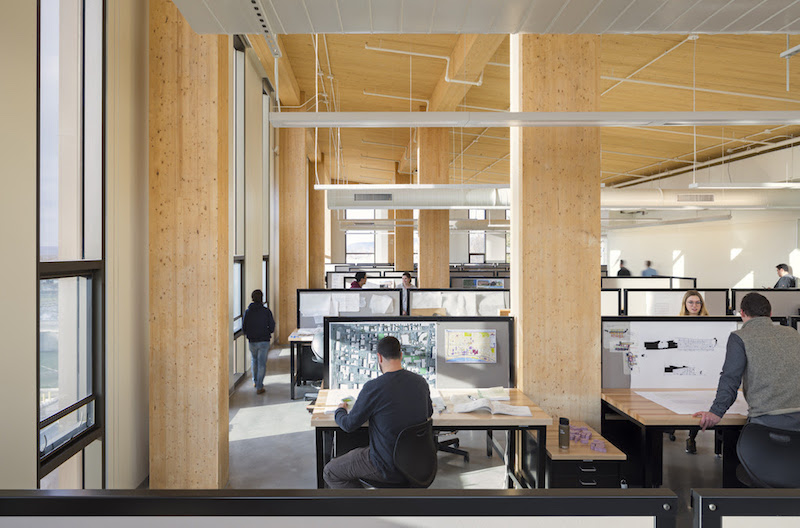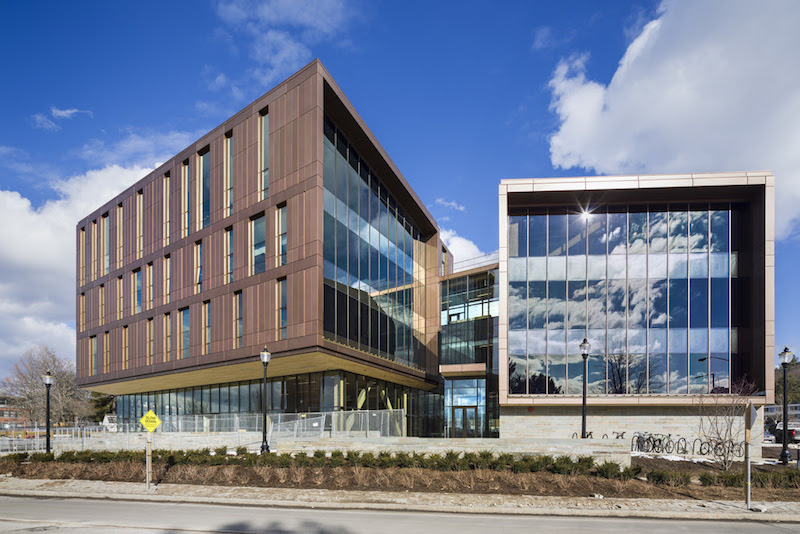Not only is the recently completed Design Building at the University of Massachusetts Amherst the first CLT academic building in the country, it is also the largest installation of wood concrete composites in North America.
The 87,500-sf project unites the university’s architecture, landscape architecture and regional planning, and building and construction technology departments under one roof for the first time.
A skylit central commons is at the core of the building and brings students together for lectures, exhibits, presentations, and informal gatherings. Additional glazing and skylights provide abundant natural light to the building’s interior, reducing the need for artificial lighting.
Studios, maker spaces, and classrooms surround the central space. A green roof sits atop the commons and includes an outdoor learning environment and experimental space for the landscape department.
The building envelope is created from copper-colored, anodized aluminum panels and vertical windows that are meant to resemble the colors and patterns of the region’s forests.
The Design Building cost $52 million to build. Leers Weinzapfel Associates was the architect for the project.
 Photo: © Albert Vecerka / Esto
Photo: © Albert Vecerka / Esto
 Photo: © Albert Vecerka / Esto
Photo: © Albert Vecerka / Esto
Related Stories
| Oct 17, 2011
Clery Act report reveals community colleges lacking integrated mass notification systems
“Detailed Analysis of U.S. College and University Annual Clery Act Reports” study now available.
| Oct 14, 2011
University of New Mexico Science & Math Learning Center attains LEED for Schools Gold
Van H. Gilbert architects enhances sustainability credentials.
| Oct 12, 2011
Bulley & Andrews celebrates 120 years of construction
The family-owned and operated general contractor attributes this significant milestone to the strong foundation built decades ago on honesty, integrity, and service in construction.
| Sep 30, 2011
Design your own floor program
Program allows users to choose from a variety of flooring and line accent colors to create unique floor designs to complement any athletic facility.
| Sep 23, 2011
Okanagan College sets sights on Living Buildings Challenge
The Living Building Challenge requires projects to meet a stringent list of qualifications, including net-zero energy and water consumption, and address critical environmental, social and economic factors.
| Sep 14, 2011
Research shows large gap in safety focus
82% of public, private and 2-year specialized colleges and universities believe they are not very effective at managing safe and secure openings or identities.
| Sep 7, 2011
KSS Architects wins AIA NJ design award
The project was one of three to win the award in the category of Architectural/Non-Residential.
| May 18, 2011
Major Trends in University Residence Halls
They’re not ‘dorms’ anymore. Today’s collegiate housing facilities are lively, state-of-the-art, and green—and a growing sector for Building Teams to explore.
| May 18, 2011
Raphael Viñoly’s serpentine-shaped building snakes up San Francisco hillside
The hillside location for the Ray and Dagmar Dolby Regeneration Medicine building at the University of California, San Francisco, presented a challenge to the Building Team of Raphael Viñoly, SmithGroup, DPR Construction, and Forell/Elsesser Engineers. The 660-foot-long serpentine-shaped building sits on a structural framework 40 to 70 feet off the ground to accommodate the hillside’s steep 60-degree slope.
















